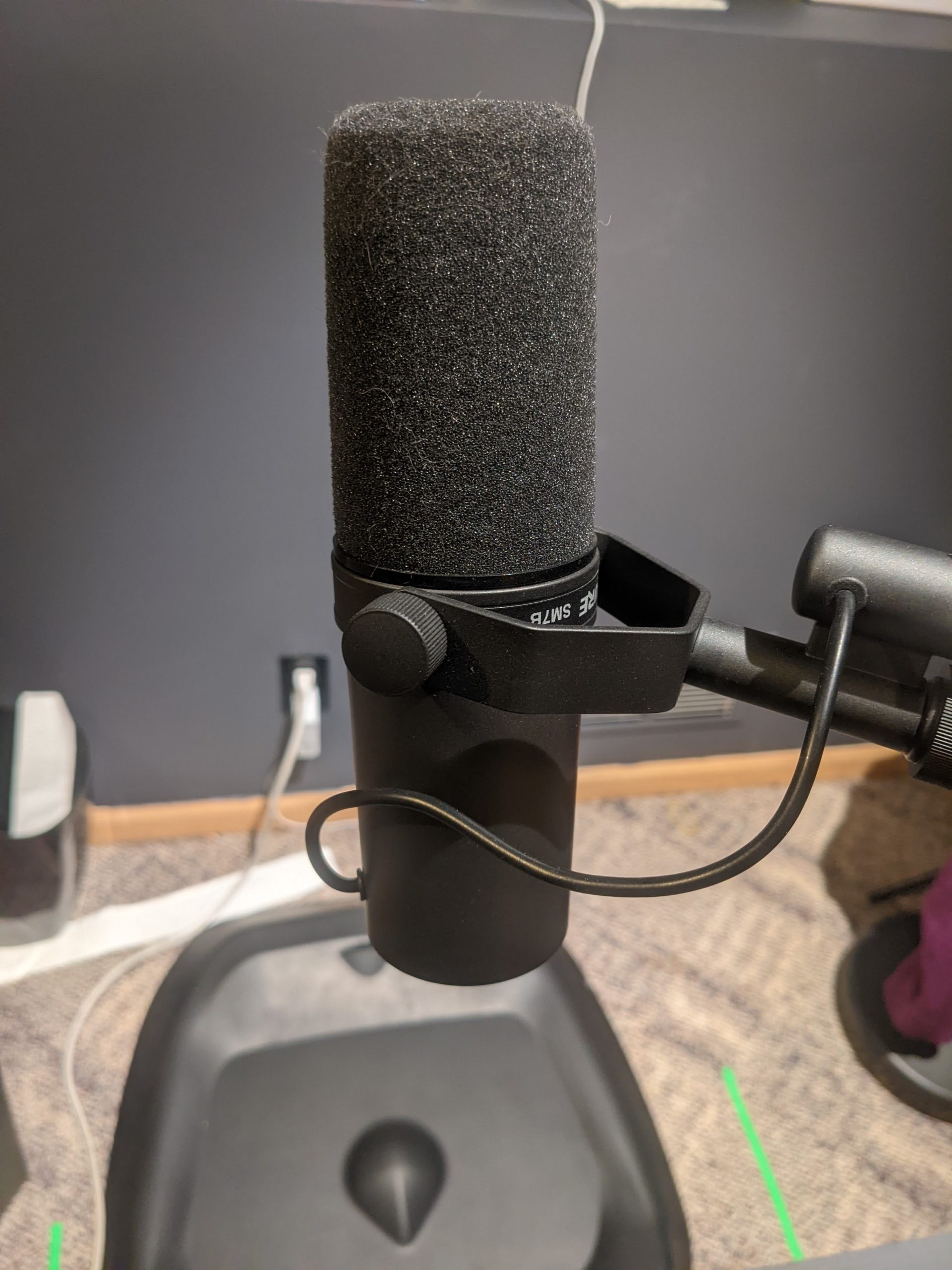At the start of the coronavirus pandemic, I got budget to build out a home studio to give talks in. It was about three thousand dollars, with a nice digital camera, a mic, pre-amp, and lights, and some bits and bobs. I even painted a wall in my basement. I’ve given a lot of talks with that setup. When we moved, I didn’t get it set up right away, because no one was complaining about my audio or video quality, and honestly, I hate the lights.
I got it set up again and recorded a text snippet with my pretty-good Logitech camera, and again with the Shure SM7B microphone. The results are here, back-to-back. The thing is, there is nothing wrong with the quality I’m getting from the webcam. It’s fine for all reasonable purposes. I’m intelligible, there’s no distracting noise, it’s fine. It’s just not nearly as good as what I get from the expensive (mildly annoying) setup.
I don’t think most people need a good mic. They need something good enough that it’s not painful to listen to them (we’re looking at you, co-worker who sounds like they’re calling from the bottom of a well). There isn’t a lot of additional value for the cost.
I don’t think I need a full foam studio like the serious podcasters and audiobook narrators have. I use my voice and appearance a fair amount, but not, like daily. For my job, but not for my living, if you see the difference.
Why is it worth that much money?
I think it’s easy for all of us, when we’re looking at tools, to want the very best tool. The podcaster mic, the gamer keyboard, the mouse specialized for reaction time, not just ergonomics. And it’s easier to think that expensive is automatically better (is it a Veblen Good?). Sometimes it is! This mic is better than the webcam mic. One of the things I’ve had to learn about “macroeconomic uncertainty” is that it’s not that there’s no money at all, it’s that the calculus about incremental improvement changes. Improvement needs to be cheaper, or steeper.
Look around at your product, and how you’re talking about it. Is it an improvement? How much improvement per dollar? How do you quantify that? Is it saved person-hours? Opportunity cost? Is it building a better foundation that will need less work later on? This is not the year people buy stuff just because it’s newer, better, and more expensive. You get to figure out how to actually frame return on investment. It’s a gift. Learn to do this, and you’ll be able to market to anyone, in all the macroeconomics.
Reading sample
Please enjoy a paragraph from one of my favorite books, Farley Mowat’s Grey Seas Under. Once with a webcam, and once again with the right equipment.

